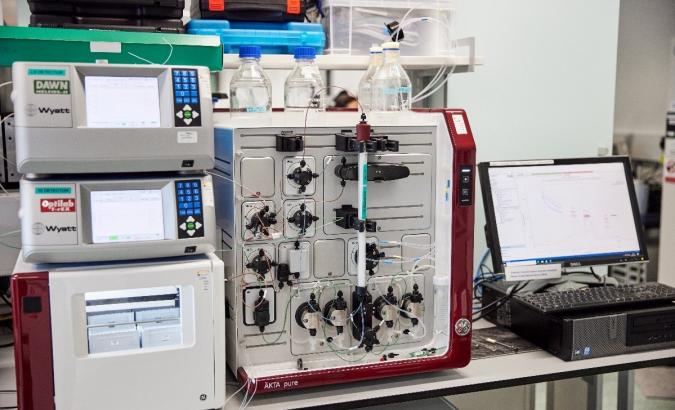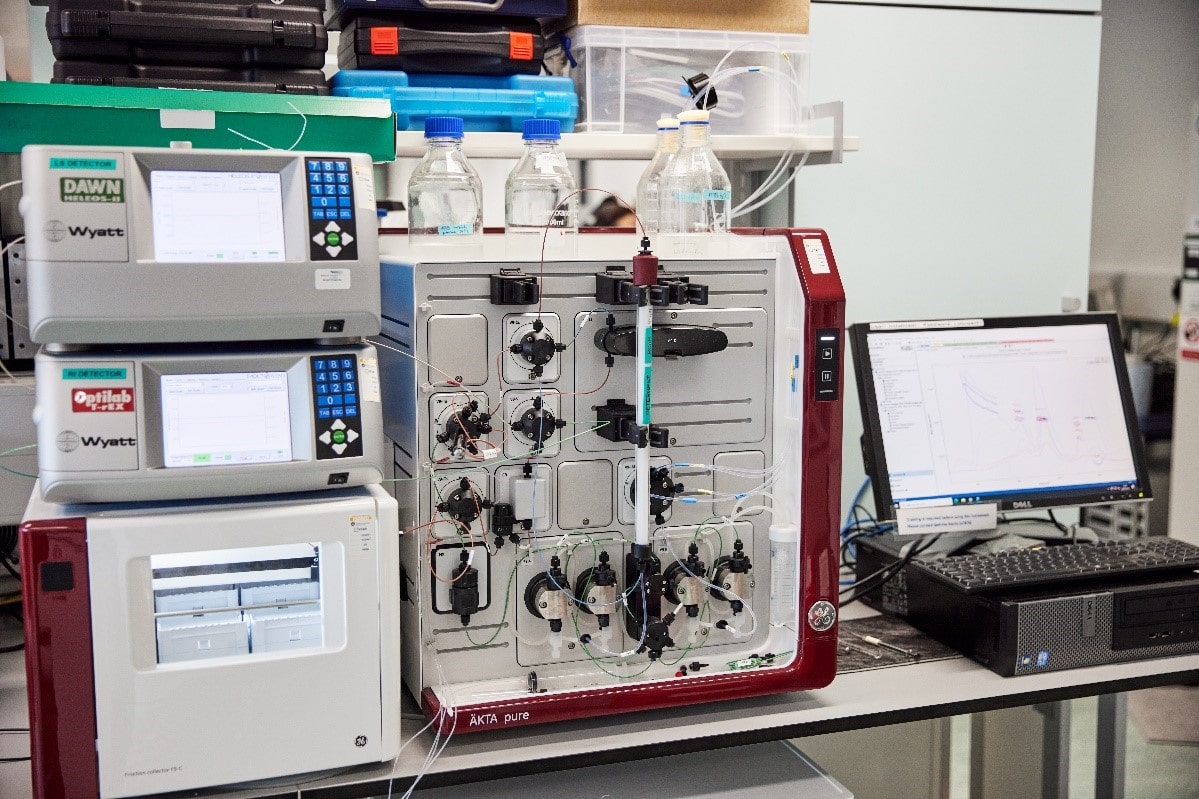Size-Exclusion Chromatography – Multi-Angle Light Scattering (SEC-MALS)
The interaction of light with matter can give information on the structure and dynamics of that material. Light scattering is a non-invasive technique for characterizing macromolecules and a wide range of particles in solution. Research Complex has an AktaPure 25 system coupled to a Wyatt Dawn HELEOS-II 18-angle light scattering detector, incorporating a WyattQELS module, and a Wyatt Optilab T-rEX refractive index detector.
The Dawn HELEOS-II light scattering detector makes two types of measurement for absolute molecular characterization:
- Classical/static light scattering: Here, the intensity of the scattered light is measured as a function of angle. For the case of macromolecules, this is often called Rayleigh scattering and can yield the molar mass, rms radius, and second virial coefficient (A2). For certain classes of particles, classical light scattering can yield the size, shape, and structure.
- Quasi-elastic light scattering (QELS): In a QELS measurement, time-dependent fluctuations in the scattered light signal are measured using a fast photon counter. QELS measurements can determine the hydrodynamic radius of macromolecules or particles.
The T-rEX refractive index detector provides accurate determination of sample concentration and, when used in combination with the light scattering and UV absorbance measurements, can be used to determine the proportion of a molecule to that of a conjugate (detergents, carbohydrates) and is thus particularly suited to the study of detergent solubilised membrane proteins. Separation of different species present in a sample by size-exclusion chromatography allows each species to be analysed separately and no calibration standards are necessary.



